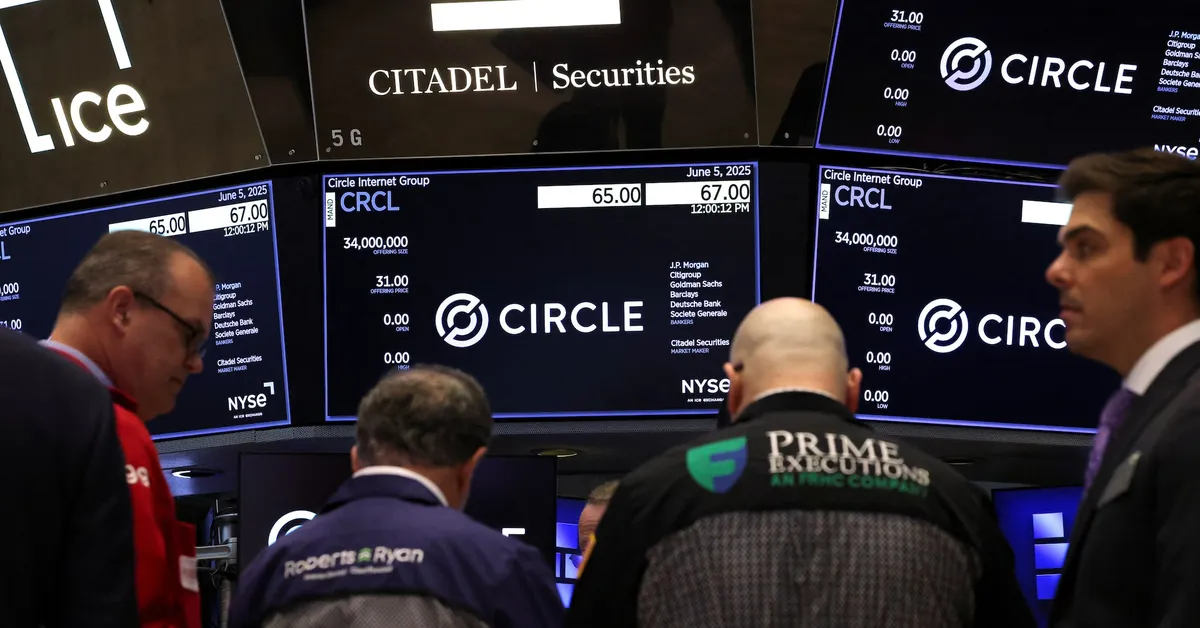
On June 18, 2023, top crypto stocks on Wall Street experienced a significant surge after the U.S. Senate passed a groundbreaking stablecoin bill. This pivotal legislation is expected to foster broader adoption of stablecoins, which have traditionally occupied a niche within the vast cryptocurrency sector. With bipartisan support, this bill marks a crucial turning point in the ongoing debate surrounding crypto oversight, paving the way for a sector that has long remained in regulatory limbo.
The newly approved bill aims to provide a regulatory framework for the issuance and management of dollar-pegged tokens. These stablecoins are designed to maintain a stable value, typically pegged to established currencies like the U.S. dollar, thereby offering the convenience of digital currencies without the inherent volatility. Analysts at brokerage Bernstein predict that, once fully enacted, stablecoins could transition from being merely the money rail of crypto to becoming integral components of the broader digital economy on the internet.
The next step in this legislative process involves the Republican-controlled House of Representatives, which must pass its version of the bill, known as the GENIUS Act. Following this, the bill will be sent to President Donald Trump for approval. Analysts suggest that if all goes smoothly, the bill could become law by the end of the summer.
Recent market activity highlights the growing interest in stablecoins. Circle, the issuer of the second-largest stablecoin by market value, made headlines with its successful public debut on the New York Stock Exchange earlier this month. Circle's stock soared to $173.60, a remarkable increase from its IPO price of $31. The company's flagship USDC stablecoin boasts a market value of approximately $61.4 billion, according to data from CoinGecko.
Industry supporters view the stablecoin legislation as one of two major crypto bills that could significantly shape the regulatory landscape this year. Proponents believe that clearer rules for issuing and managing dollar-pegged tokens will enhance the legitimacy of the entire sector. Additionally, several high-profile corporations are reportedly exploring the launch of their own stablecoins, indicating a growing trend within the industry.
"History is being made," declared Circle CEO Jeremy Allaire on social media platform X, expressing optimism that this legislation will bolster U.S. economic and national competitiveness for years to come. Currently, stablecoins represent approximately $256 billion of the total $3.3 trillion market value in the crypto sector, according to CoinMarketCap data. As demand for stablecoins continues to grow, the progression of this new bill through Congress could further accelerate that demand, according to Andrew Rocco, a stock strategist at Zacks Investment Research.
If signed into law, the new regulations will require stablecoins to be backed by liquid assets, including U.S. dollars and short-term Treasury bills. Furthermore, issuers will be mandated to publicly disclose the composition of their reserves on a monthly basis, enhancing transparency and credibility within the industry.
Experts at brokerage KBW suggest that the increased adoption of stablecoins may also serve as a robust tailwind for major cryptocurrencies like Bitcoin, further intertwining the future of stablecoins with the broader crypto market. As the landscape evolves, both investors and consumers alike will be watching closely to see how these developments unfold.
Reporting by Manya Saini in Bengaluru; Editing by Arun Koyyur and Maju Samuel. Manya specializes in reporting on notable publicly listed U.S. financial firms, covering everything from Wall Street’s largest banks to fintech innovations. Her insights also extend to late-stage venture capital funding and regulatory developments within the cryptocurrency sector.